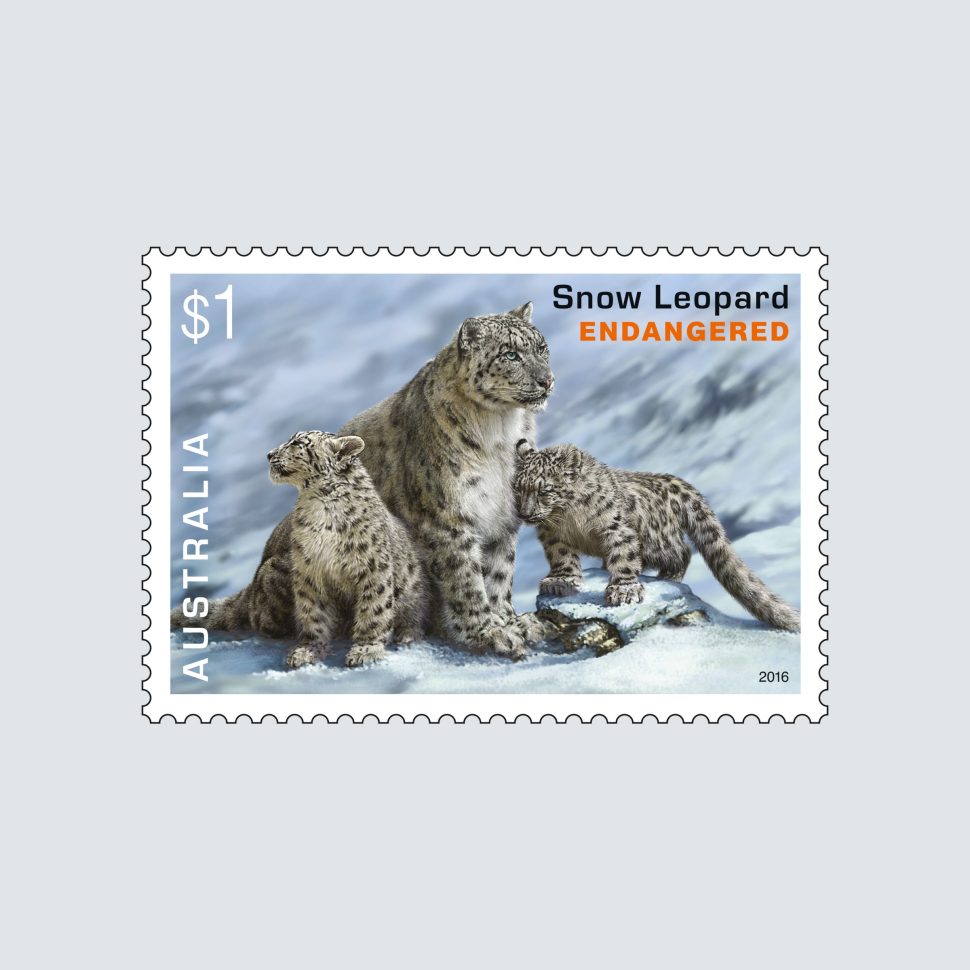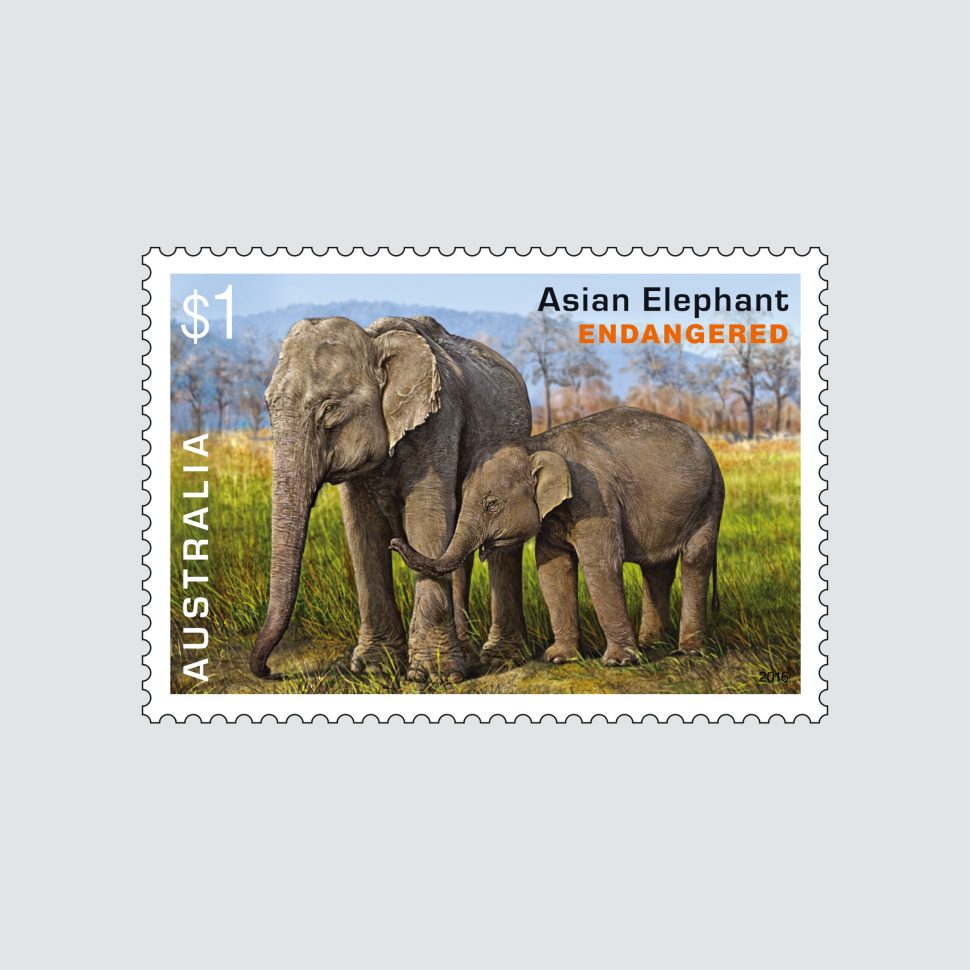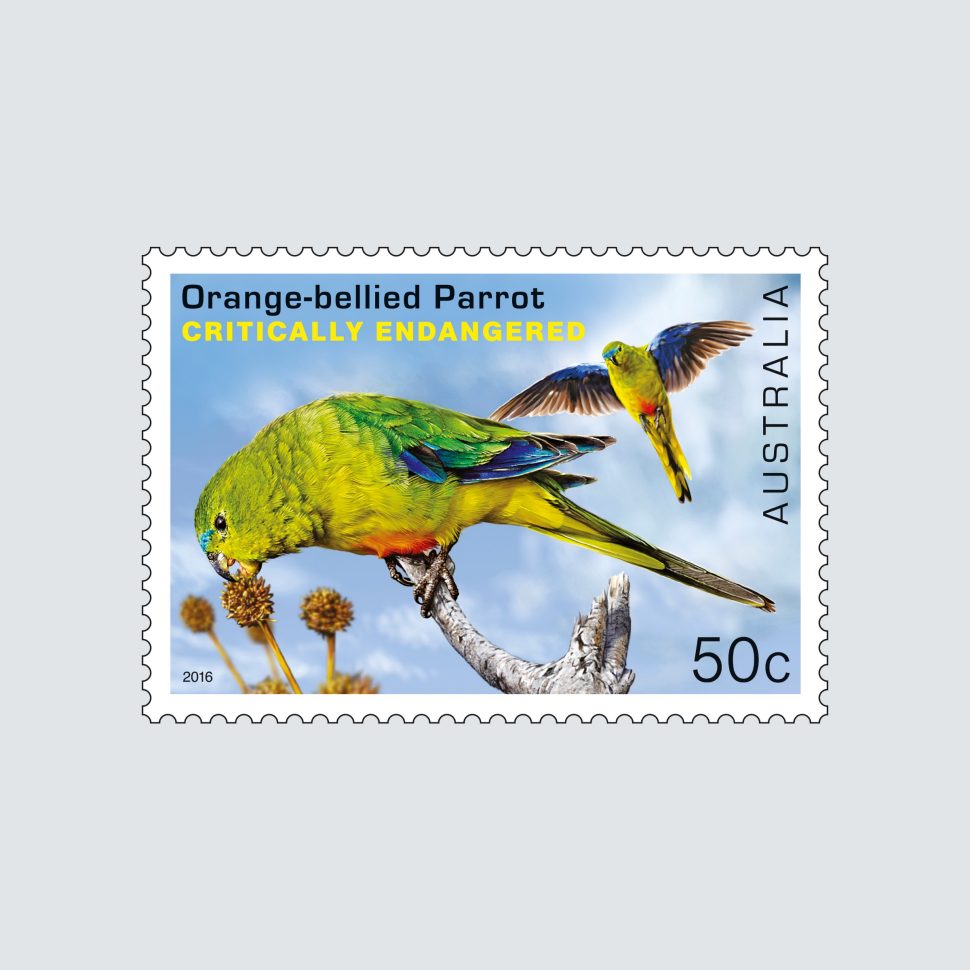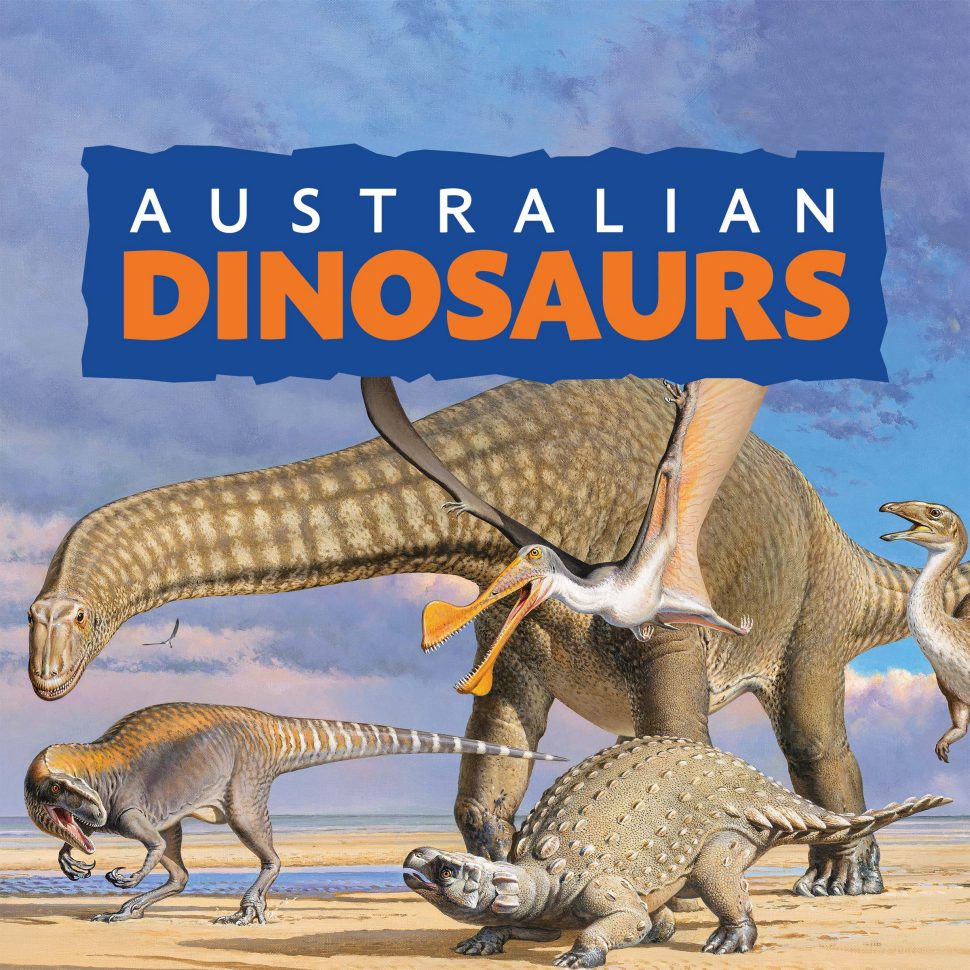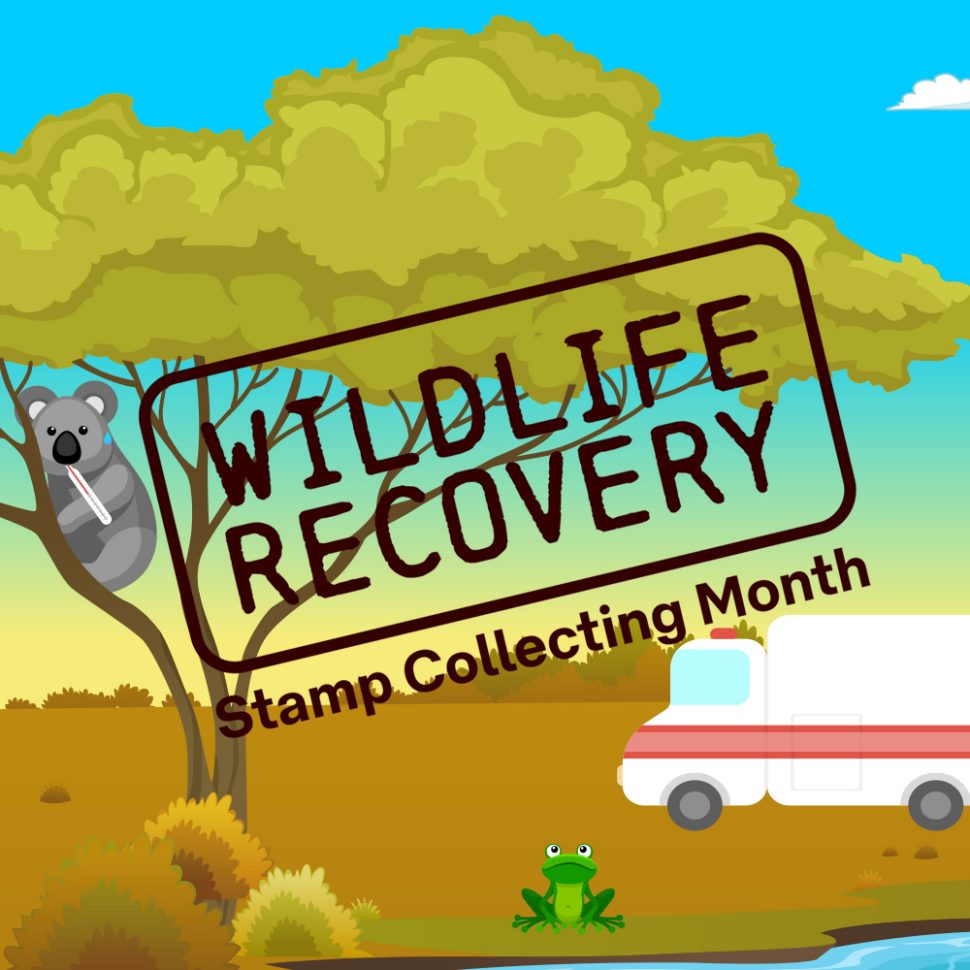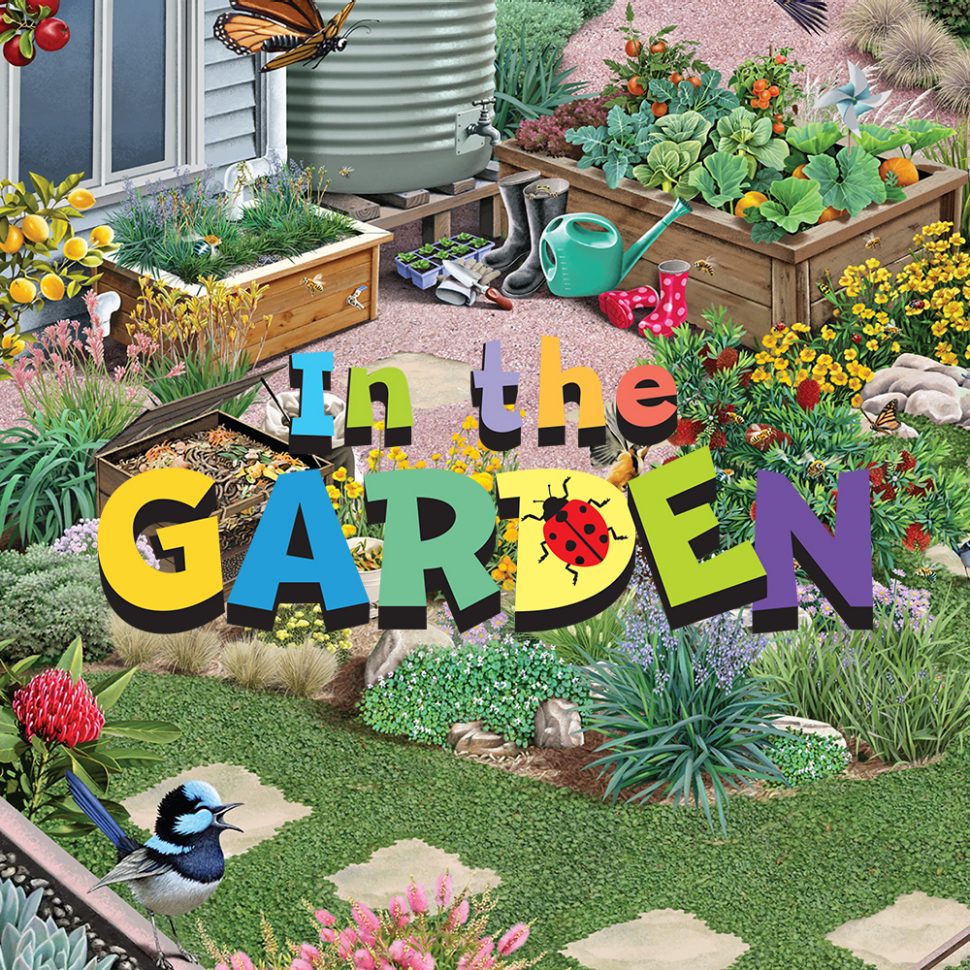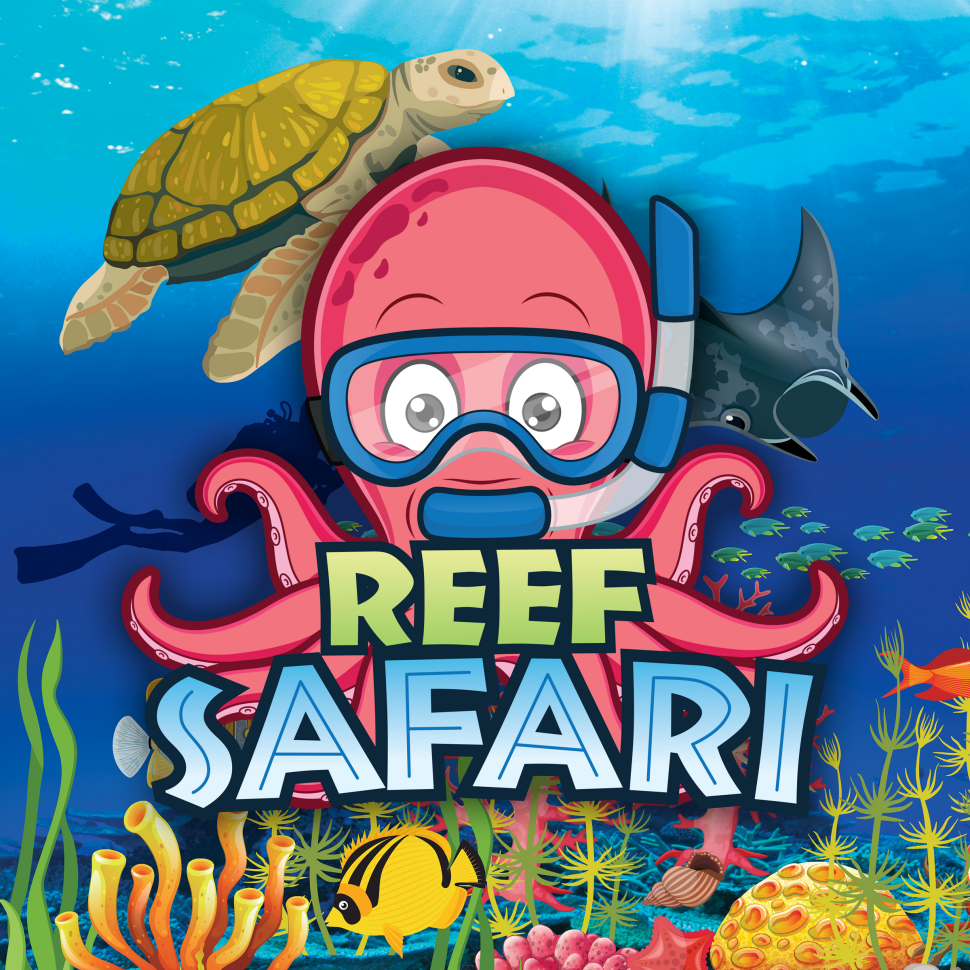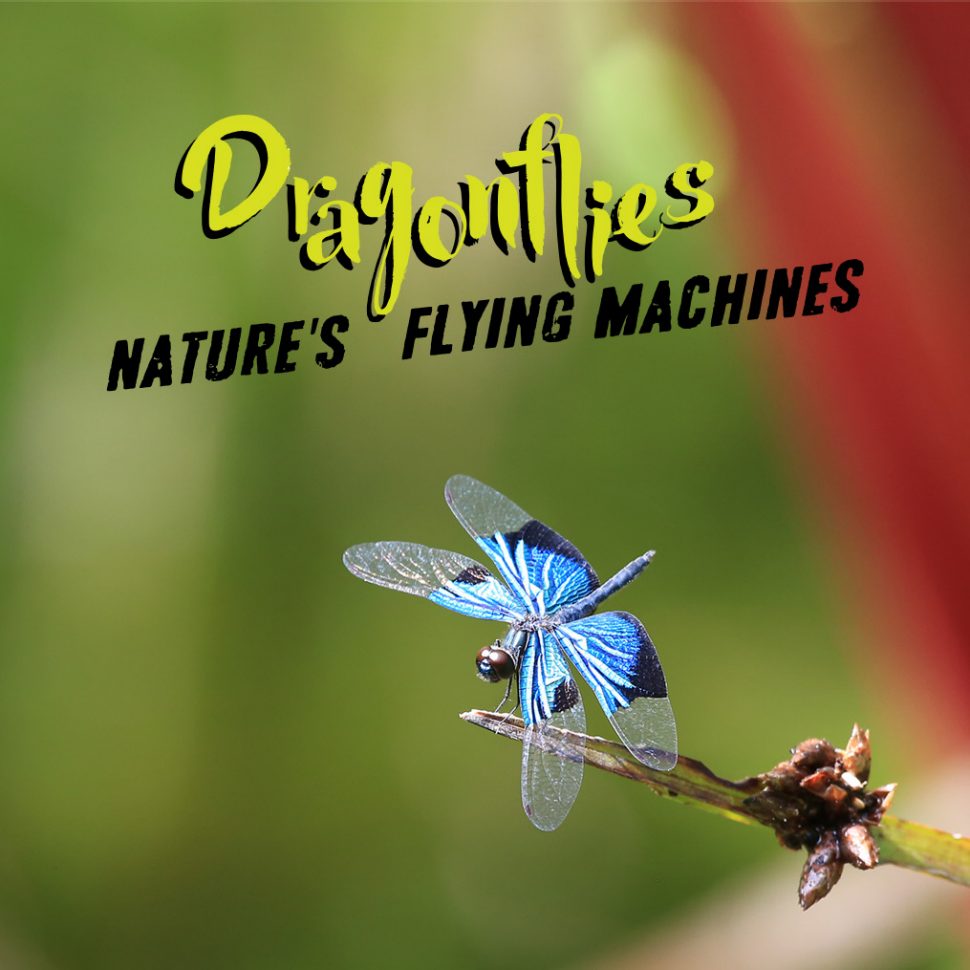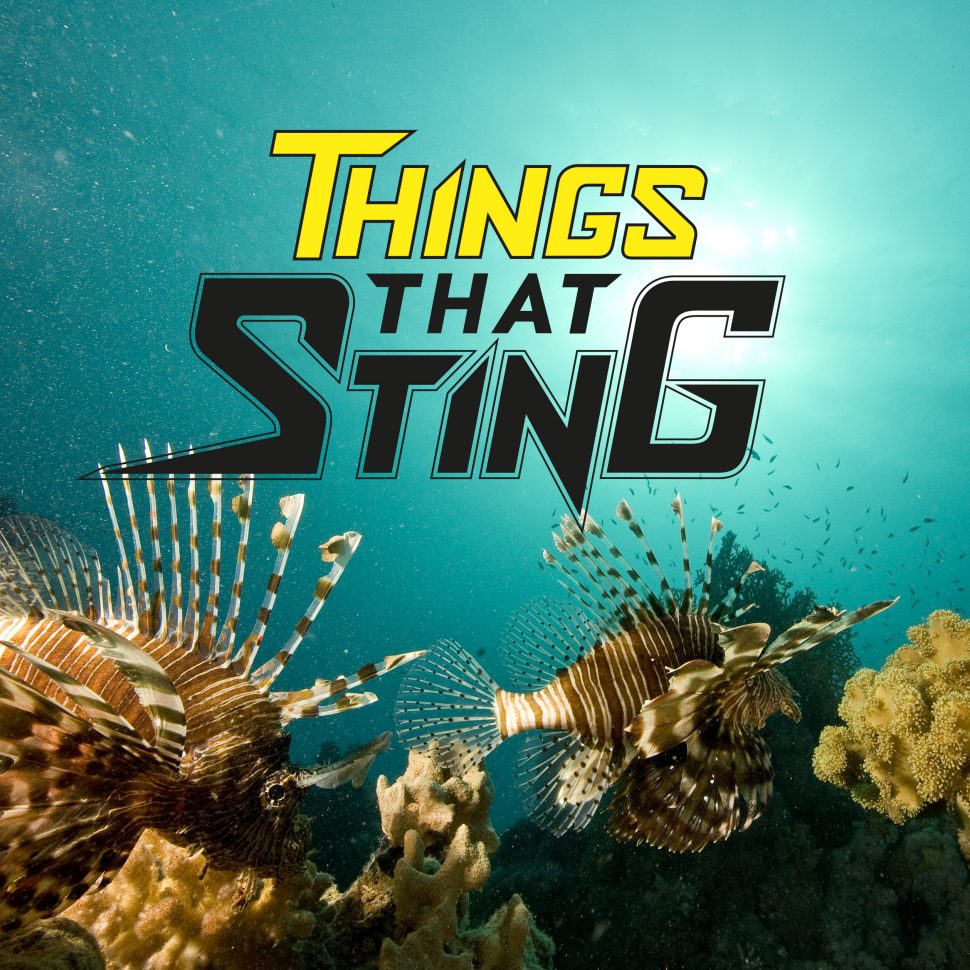Endangered Animals Stamps Voiceover Script
This October it's Stamp Collecting Month and this year’s theme is “Endangered Wildlife”. Let's go on a safari to visit four native and three exotic endangered animals that are part of Australia's conservation programs.
The Southern Corroboree Frog
Pseudophryne corroboree
Critically Endangered
The brightly coloured Southern Corroboree Frog is one of the world’s rarest frogs, living only in a small area in sub-alpine Mt Kosciuszko National Park. Its numbers have declined by more than 99 per cent since the 1980s because of its susceptibility to the chytrid fungus.
Captive breeding colonies are being maintained at the Amphibian Research Centre, Taronga Zoo, Melbourne Zoo and Healesville Sanctuary, and since 2010, hundreds of captive bred frogs have been released back into the wild.
The Snow Leopard
Panthera uncia syn. Uncia uncia
Endangered
The Snow Leopard is native to mountain ranges of central and south Asia. These cats are very rarely seen and are spread over two million square kilometres across 12 countries. There are only between 4,000 and 6,500 Snow Leopards left in the wild and this number continues to decline.
The Australasian region contributes to the International Snow Leopard Trust, and animals are currently housed at Melbourne Zoo and three privately owned zoos in Canberra and New South Wales.
The Asian Elephant
Elephas maximus
Endangered
The Asian Elephant is now restricted to just 15 per cent of its original range. Its population has declined by at least 50 per cent over the last 75 years, with its global population now estimated at just over 40,000. The elephant’s remaining habitat is shrinking fast and elephants are killed for their tusks, meat and leather.
Asian Elephants can be found at Melbourne Zoo, Perth Zoo, Taronga Zoo, and Taronga Western Plains Zoo at Dubbo.
The Western Lowland Gorilla
Gorilla gorilla gorilla
Critically Endangered
The Western Lowland Gorilla is native to the dense, remote rainforests of central Africa. Because of poaching and disease, the gorilla’s numbers have declined by more than 60 per cent in the last 20 to 25 years, and its remaining population is thought to be around 100,000. They are illegally hunted for food, as pets, and for body parts for traditional medicine.
Australian Zoos participating in International Breeding Programs to save the Gorilla are Taronga, Melbourne, Werribee, and Mogo Zoos.
The Western Swamp Tortoise
Pseudemydura umbrina
Critically Endangered
The Western Swamp tortoise is a small freshwater creature found only in two locations in Western Australia. It's Australia’s most endangered reptile and it's very vulnerable to land clearing, pesticides, fertilisers, fire and predators like cats, rats and foxes.
Since the mid-1980s, habitat management, captive breeding and translocations have increased the number from just 50 to around 200 in the wild. Adelaide Zoo is part of the captive breeding program to ensure the long-term survival of the species.
The Orange-bellied Parrot
Neophema chrysogaster
Critically Endangered
The Orange Bellied Parrot is on the brink of extinction. The parrot breeds only in Tasmania and spends winters in coastal Victoria and South Australia. While the main threat to the parrot is the fragmentation of its habitat, predators such as cats and foxes also pose a threat.
In 2016, there are fewer than 50 birds in the wild. However, more than 340 birds have been successfully bred in captivity and these are gradually being been released into the wild in an effort to increase the number of this critically endangered parrot.
The Northern Quoll
Dasyurus hallucatus
Endangered
The Northern Quoll, a small, omnivorous marsupial, once occurred across northern Australia from Western Australia to southern Queensland, but is now found in isolated populations in the Pilbara, the Kimberley, north-west Northern Territory and eastern Queensland.
A major threat to the Northern Quoll is the poisonous Cane Toad. This introduced pest kills quolls that eat it. Other current threats include fires and feral cats. Management of existing populations and protection of islands from cane toads and feral cats are helping to protect this iconic species.
*
That brings us to the end of our Safari. Thanks for joining us! And remember to collect each of the “Endangered Wildlife” stamps as part of this year’s Stamp Collecting Month, beginning on the 20th of September.



